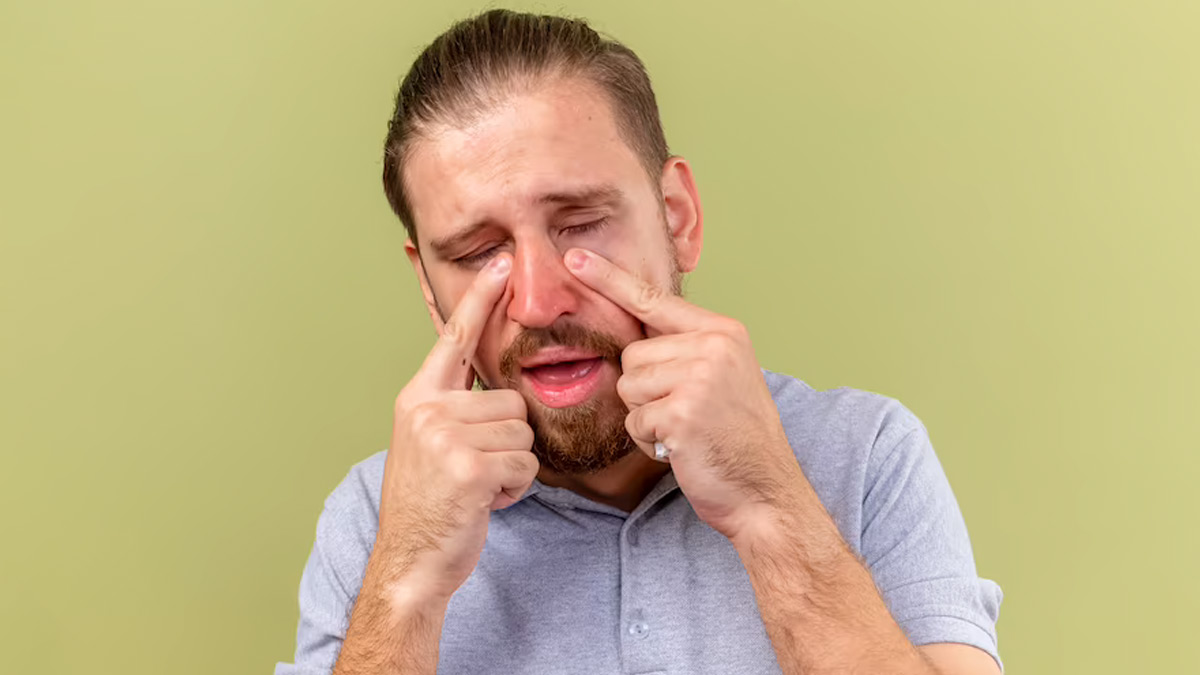Experiencing a pimple in your nose can be uncomfortable, embarrassing, and even painful. This prevalent skin concern affects countless individuals globally, and understanding its causes and treatments is crucial for maintaining your skin health and overall well-being. Whether it’s a small bump or a larger, inflamed pimple, the discomfort it causes can significantly affect your daily life.
Numerous factors contribute to the development of pimples inside the nose, such as bacteria, hormonal fluctuations, and inadequate hygiene. While over-the-counter treatments and home remedies often work effectively, persistent or severe cases may necessitate professional medical attention. In this article, we will delve into the causes, symptoms, and treatment options for nasal pimples, along with tips for prevention and maintaining nasal health.
Our aim is to provide you with a thorough guide supported by scientific research and expert advice, empowering you with the knowledge to handle this issue confidently. Let’s explore the details and uncover everything you need to know about managing a pimple in your nose.
Read also:Lily Tomlin Opens Up About Her 40year Friendship With Jane Fonda
Table of Contents
- Causes of Pimples in the Nose
- Symptoms of Pimples in the Nose
- Effective Treatments for Pimples in the Nose
- Preventing Pimples in the Nose
- Home Remedies for Pimples in the Nose
- Medical Treatments for Severe Cases
- What Not to Do When You Have a Pimple in the Nose
- Health Risks Associated with Pimples in the Nose
- Tips for Maintaining Nasal Health
- Conclusion: Taking Control of Your Skin Health
Causes of Pimples in the Nose
Pimples in the nose typically arise due to blocked hair follicles and oil glands. These blockages can result from a variety of factors, including:
1. Bacterial Infection
Staphylococcus bacteria are commonly found on the skin and inside the nose. When these bacteria multiply excessively, they can lead to infections and the formation of pimples. Maintaining proper hygiene is essential to prevent bacterial overgrowth, as cleanliness plays a pivotal role in reducing the risk of infection.
2. Hormonal Changes
Hormonal fluctuations, especially during puberty, pregnancy, or menstruation, can increase the production of sebum, which may result in clogged pores and pimples. Managing hormonal imbalances through dietary adjustments and lifestyle changes can help minimize the occurrence of pimples, promoting clearer skin.
3. Poor Hygiene
Failure to clean your nose regularly can lead to the accumulation of dirt, oil, and dead skin cells, creating an environment conducive to the formation of pimples. Regular nasal cleansing is critical for preventing this issue, ensuring that the nasal passages remain clean and free of debris.
Symptoms of Pimples in the Nose
Identifying the symptoms of a pimple in your nose is the first step toward effective treatment. Common signs include:
- Redness and swelling in the nasal area
- Pain or tenderness when touching the nose
- A visible white or yellow pus-filled bump
- Difficulty breathing through the affected nostril
If left untreated, these symptoms can escalate, potentially leading to more severe complications. Recognizing and addressing them promptly is essential for preventing further issues.
Read also:Princess Eugenie Celebrates National Sibling Day With Heartfelt Message For Princess Beatrice
Effective Treatments for Pimples in the Nose
Treating a pimple in your nose requires a thoughtful and patient approach. Below are some effective treatments to consider:
1. Over-the-Counter Treatments
Topical creams containing benzoyl peroxide or salicylic acid can help reduce inflammation and eliminate bacteria. These products are widely available and can be incorporated into your daily skincare routine, offering a convenient solution for managing mild to moderate pimples.
2. Warm Compresses
Applying a warm compress to the affected area can help draw out the pus and reduce swelling. This natural remedy is safe and effective for most cases of nasal pimples, providing relief without the need for harsh chemicals or invasive procedures.
3. Antibiotics
In severe cases, a healthcare provider may prescribe oral or topical antibiotics to combat bacterial infections. It is crucial to adhere to your doctor’s instructions when using antibiotics to prevent resistance and ensure optimal results.
Preventing Pimples in the Nose
Prevention is the best strategy for avoiding future outbreaks of pimples in your nose. Consider the following tips to maintain optimal nasal health:
- Wash your hands regularly to prevent the transfer of bacteria to your nose
- Resist the temptation to pick or squeeze pimples in your nose, as this can lead to infections
- Use gentle, non-irritating skincare products to minimize irritation and maintain skin balance
- Stay hydrated and maintain a balanced diet rich in essential nutrients to support overall skin health
By incorporating these habits into your daily routine, you can significantly reduce the likelihood of developing pimples in your nose, promoting a healthier nasal environment.
Home Remedies for Pimples in the Nose
For mild cases, home remedies can offer relief and promote healing. Explore the following options:
1. Tea Tree Oil
Tea tree oil is renowned for its antibacterial properties, which can help reduce inflammation and eliminate bacteria. Dilute the oil with a carrier oil before applying it to the affected area to avoid irritation and ensure safe use.
2. Aloe Vera Gel
Aloe vera possesses soothing and healing properties that can alleviate pain and redness. Applying pure aloe vera gel directly to the pimple can provide relief and support the healing process, making it an excellent natural option for managing mild pimples.
3. Honey
Honey is a natural antiseptic that can help prevent infections and promote healing. Applying a small amount of honey to the pimple and leaving it on for 15-20 minutes before rinsing off can offer effective relief, harnessing the power of nature to address this common skin concern.
Medical Treatments for Severe Cases
For persistent or severe pimples in the nose, medical intervention may be necessary. The following options are available:
1. Incision and Drainage
A healthcare professional may perform an incision to drain the pus from the pimple. This procedure should only be conducted by a qualified medical practitioner to ensure safety and proper healing.
2. Steroid Injections
In some cases, a doctor may recommend steroid injections to reduce inflammation and accelerate healing. These injections are typically reserved for severe cases, offering a targeted solution for managing complex pimples.
What Not to Do When You Have a Pimple in the Nose
While it may be tempting to pick or squeeze a pimple in your nose, doing so can lead to complications. Avoid the following actions to ensure a safe and effective recovery:
- Picking at the pimple, as this can introduce infections and worsen the condition
- Using harsh chemicals or scrubbing the area, which can irritate the skin and exacerbate the issue
- Ignoring persistent or painful pimples, as they may require professional attention to prevent further complications
By exercising restraint and seeking professional help when necessary, you can ensure a safe and effective recovery, minimizing the risk of complications and promoting long-term nasal health.
Health Risks Associated with Pimples in the Nose
While most nasal pimples are harmless, some can pose serious health risks. The "danger triangle" of the face, which includes the area between the nose and mouth, is particularly vulnerable to infections that can spread to the brain if left untreated. Always consult a doctor if you experience:
- Severe pain or swelling
- Fevers or chills
- Persistent redness or discharge
Recognizing these potential risks and seeking timely medical attention is crucial for ensuring your safety and well-being.
Tips for Maintaining Nasal Health
To keep your nose healthy and free of pimples, follow these general tips:
- Practice good hygiene by cleaning your nose regularly to remove dirt, oil, and debris
- Avoid using oily skincare products that can clog pores and contribute to the formation of pimples
- Stay hydrated and eat a balanced diet rich in vitamins and minerals to support overall skin health
- Exercise regularly to improve circulation and enhance skin health, promoting a clearer complexion
By prioritizing your nasal health and adopting these habits, you can prevent future outbreaks and maintain a healthier, clearer complexion.
Conclusion: Taking Control of Your Skin Health
In conclusion, managing a pimple in your nose requires a combination of knowledge, patience, and proper care. By understanding the causes, symptoms, and treatment options, you can effectively address this common skin issue. Remember to avoid picking or squeezing pimples and seek medical attention when necessary to ensure a safe and successful recovery.
We encourage you to share this article with others who may benefit from the information. Feel free to leave a comment below if you have any questions or additional tips for maintaining nasal health. Together, we can promote a healthier, happier you!
References:
- Mayo Clinic - Skin Conditions
- Harvard Health Publishing - Acne Prevention
- WebMD - Nasal Health


